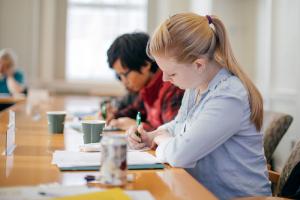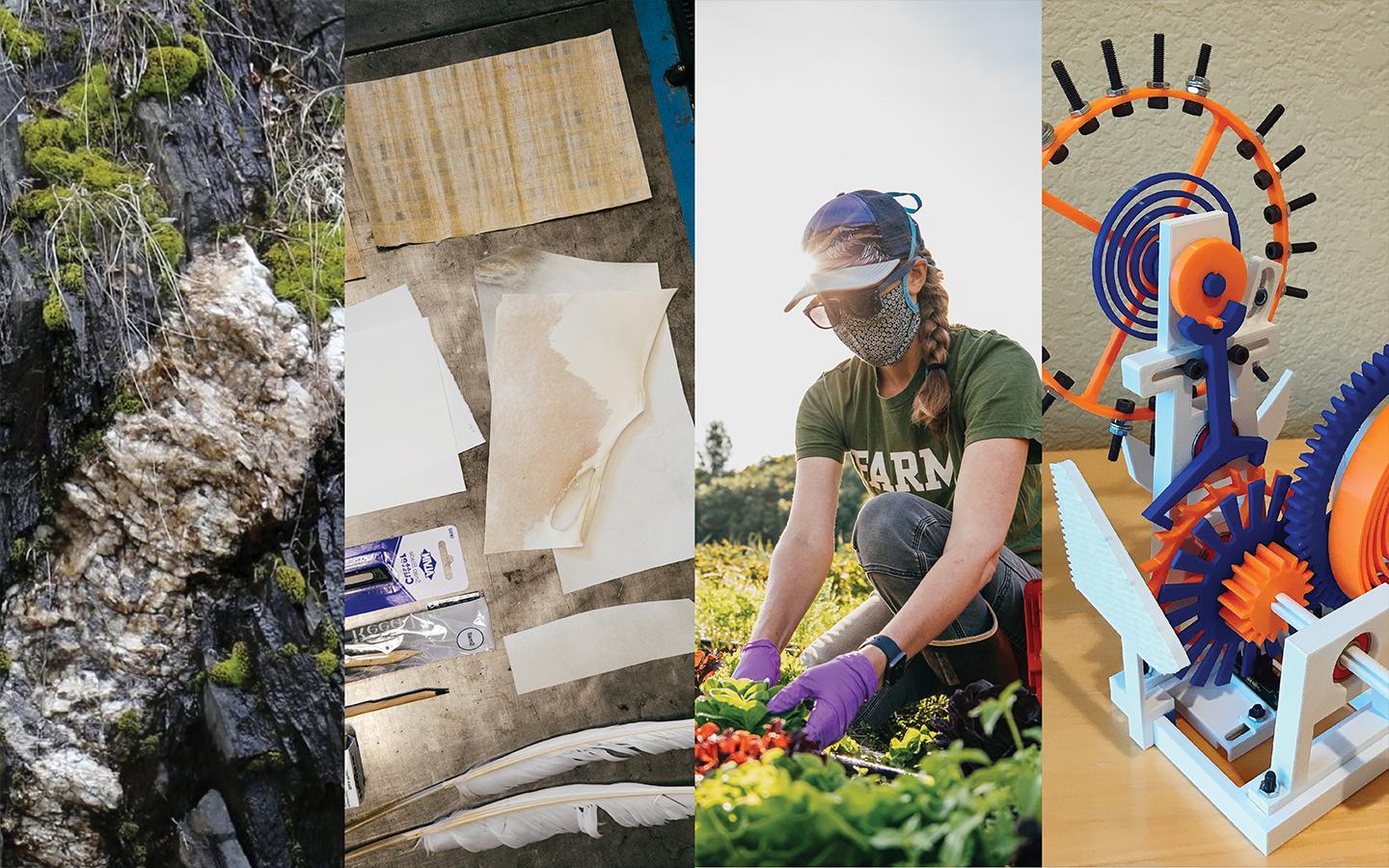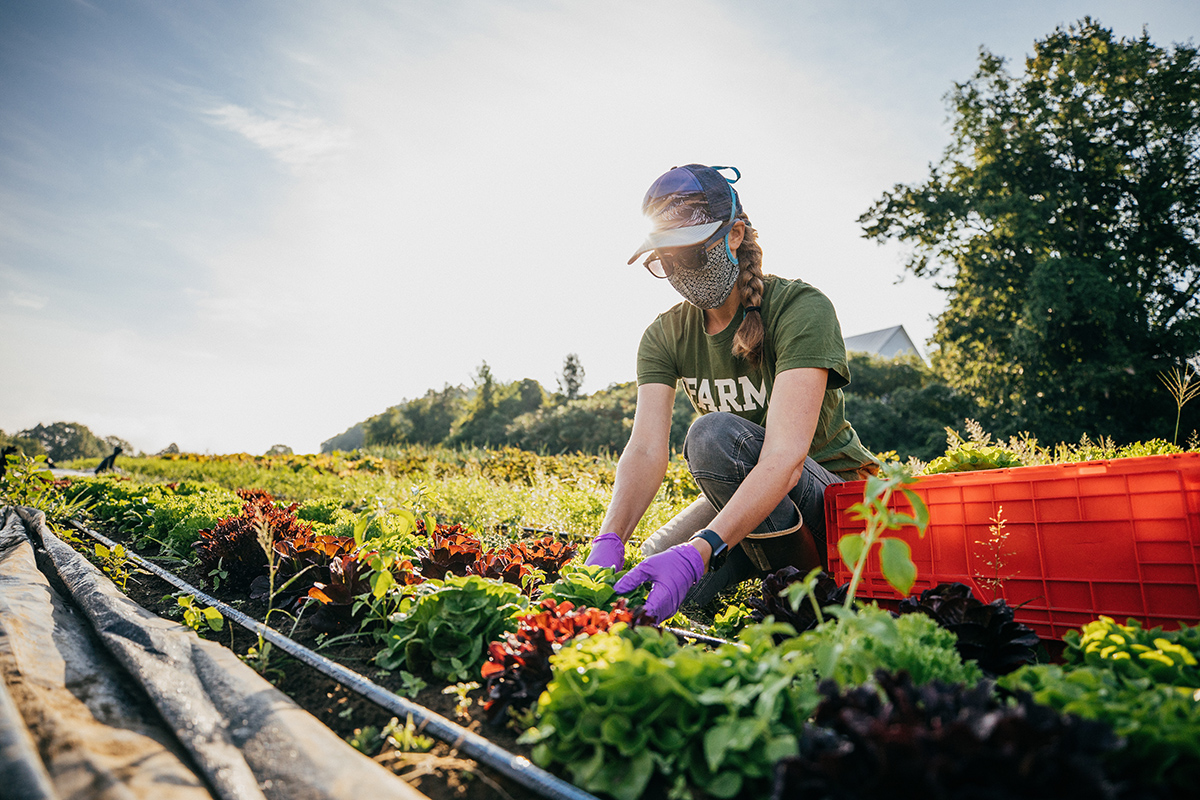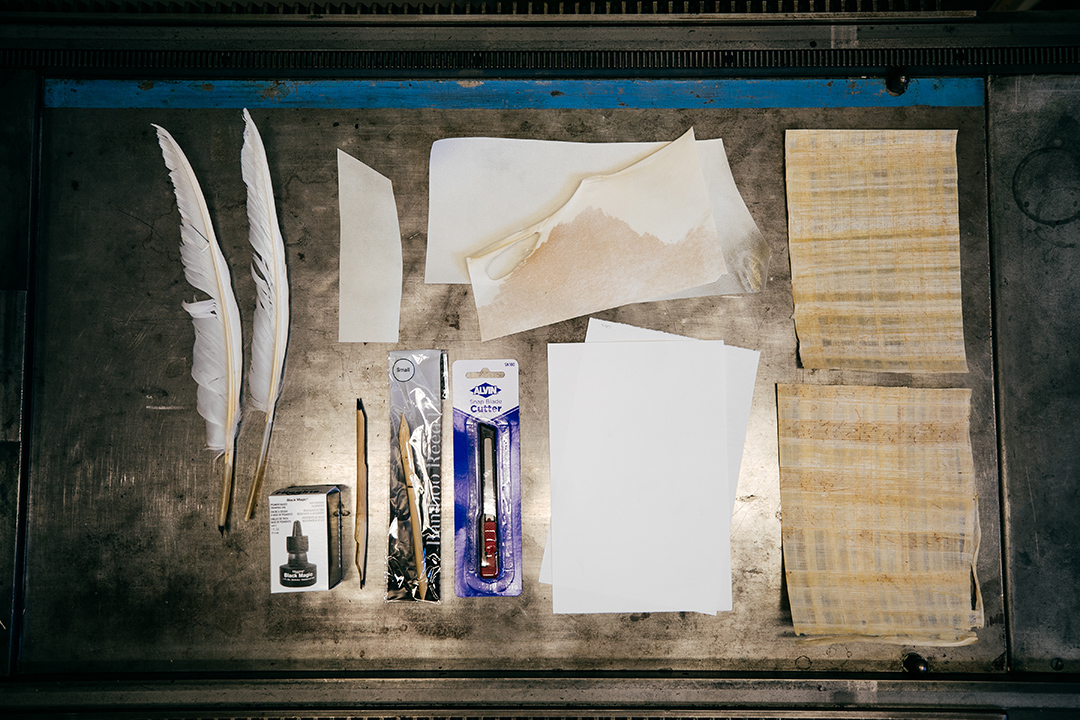
Dartmouth Center for the Advancement of Learning
Inquire about the naming opportunity for the Dartmouth Center for the Advancement of Learning.
From 3D rocks to 3D printers, Dartmouth faculty are finding new ways to engage students in remote learning. In collaboration with the Dartmouth Center for the Advancement of Learning (DCAL), faculty are also reshaping their courses to provide students with powerful hands-on and interactive virtual learning experiences.

With the onset of the pandemic, Dartmouth faculty and staff have stepped up to the challenge of 100 percent remote teaching by developing creative ways to bring experiential learning into students’ homes. Students designed sustainable living spaces, practiced writing techniques from antiquity, and much more. An engineering class built marine clocks using 3D printers.
The Dartmouth Center for the Advancement of Learning helped support hundreds of faculty in making the transition. DCAL staff, working with Dartmouth Learning Design and Technology, provided workshops in best pedagogical practices using Zoom and other technologies to engage students and build community. DCAL supported more than 600 courses in the spring term and 200 in the summer as well as 67 learning fellows (spring and summer) who facilitate class discussion.
“Our faculty are taking ownership of their teaching in the remote environment,” says Scott Pauls, director of DCAL and professor and chair of mathematics. “After the intensity of spring term, faculty have had time to experiment and are now making informed choices what kinds of teaching works best for their course and their students’ needs. There is healthy innovation going on that will carry into fall.”
Examples of teaching innovation:
Dartmouth engineering students stepped up to the ultimate challenge: build the most accurate, 3D-printed marine clock. Students collaborated remotely on small teams and had to complete clocks in less than 10 weeks. The clocks had to operate as precisely as possible while moving on a print bed, simulating movement at sea. Dartmouth shipped new 3D printers to every student (priced under $200 each), at no extra cost.
“Students were extremely adaptable,” says Associate Professor of Engineering Sol Diamond, who led the course. “They organized efficient communication channels, rebuilt parts that didn’t fit, and coordinated to work across idiosyncrasies of different 3D printers.”
Team One designed a clock with modular pieces that stacked on top of each other. “Some connecting parts had to be very small,” says Ben Culmer ’20, a fourth-year BE student. “The problem is the printer cannot always handle the very small size. So we had to think together creatively on how to make parts small enough that wouldn’t interfere with overall functioning. It took a lot of trial and error.”
"Most of all," says fourth-year B.E. student Mary Tobin ’20, "it was great to be part of a community of students throughout the world interested in creating a chronometer together.” Read the full story.
In Earth Sciences 1, “How the Earth Works,” students came together remotely, from as far away as New Zealand and South Korea, to explore geological landscapes across the Upper Valley, looking for clues on how the planet evolved over millions of years. Since the students could not travel to these locations, faculty brought the Upper Valley to them using a variety of 3D digital tools.
Using 3D models, students could closely examine sandstone on Rollins Chapel or a 60-million-year-old lava flow behind Fairchild Hall, watch a 360-degree video of Quechee Gorge, or zoom in on layers of rock formations at the Union Village Dam.
Gigapan of rock wall at Union Village Dam:
Layers of metamorphic rock, tilted and folded, at Union Village Dam in Thetford, Vermont
The digital assets were originally produced under a grant for past classes and proved very useful. “We wanted students to look at the small minerals remotely that make up rocks and link observations to process that govern how the rocks formed.,” says Edward Meyer, a senior lecturer in earth sciences at Dartmouth and co-teacher of the course. “Students could then link those processes they learned in lab work to the geologic history of the region, by studying a 3D model, then share their findings with lab partners and in online breakout rooms. That was wonderful to see. We’ll continue using these models in future courses.”
For a course in sustainable food systems, Theresa Ong, an assistant professor of environmental studies, wanted to give students as close an experience with agriculture as possible. So she worked with Dartmouth Organic Farm to produce three videos, covering biodiversity practices, soil creation, and the farm’s social and educational mission.
The first video gives students a virtual tour of the different crops at the farm and their associated biodiversity, like the pollinators, ladybugs, and predators of pests. “It’s a great example of what you can accomplish with diversity in a small space,” says Ong.

Londyn Crenshaw ’22 was so inspired by the video that she created her own video for her final project in the course. She interviewed Cleveland’s first 20th-century urban farmer, who was also featured on the front page of The Plain Dealer.
“This course was an amazing learning experience,” she adds. “I never missed a Zoom discussion. Theresa Ong had such an interesting mix of material to comment on: documentary snippets, articles, podcasts. Students were so engaged.”
Deborah Forger, a lecturer in Jewish studies, wanted her students to have a sensory-rich understanding into how people wrote in ancient times. So for her course “The Jewish Jesus,” she mailed lab kits with writing technology used during the time Jesus lived, including papyrus, goatskin parchment, and bamboo reed pens.

“I wanted to give students to experience the physical nature of our sources and to reflect upon the laborious processes by which they were created, transcribed, circulated, and preserved," says Forger. “I had them soak the papyrus (which comes from a bamboo-like plant) in water, pull it apart, then reassemble it and practice writing on it to see the effort and time it takes.”
In the course, students read primary sources whose origins date back to the first century. “A lot of recent scholarship is reimagining the very notion of the 'Bible' as a 'book,’ at least in Jesus's own day,” says Folger. “Various parts of the Bible as we think of it today were preserved and circulated on individual scrolls, often made from papyrus or parchment, and written on with rudimentary forms of ink.”
“The Dartmouth Center for the Advancement of Learning did an outstanding job providing guidance and insight on how best to engage students remotely and how to make your ideas take shape. Teaching at Dartmouth is a pedagogical dream. If you have a vision to try something new and say, ‘Is this possible?’, your colleagues say, ‘Yes, let’s make it happen.’”